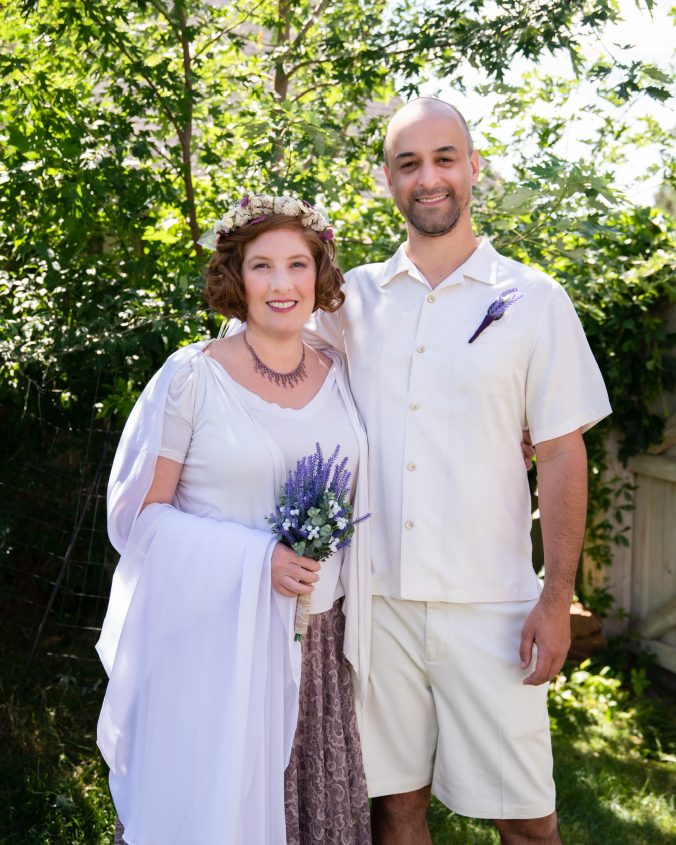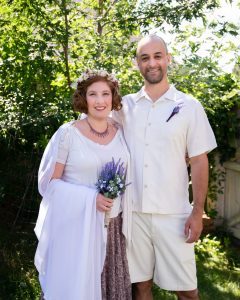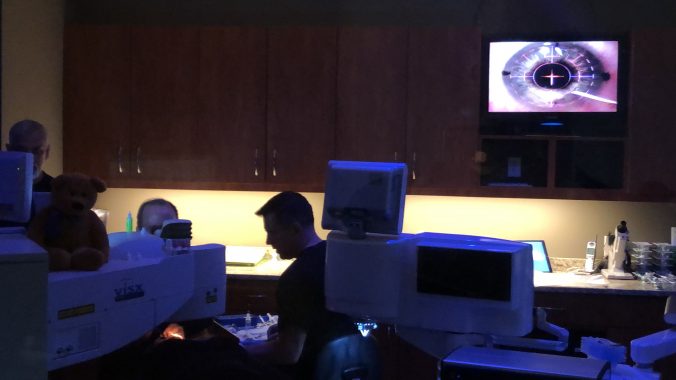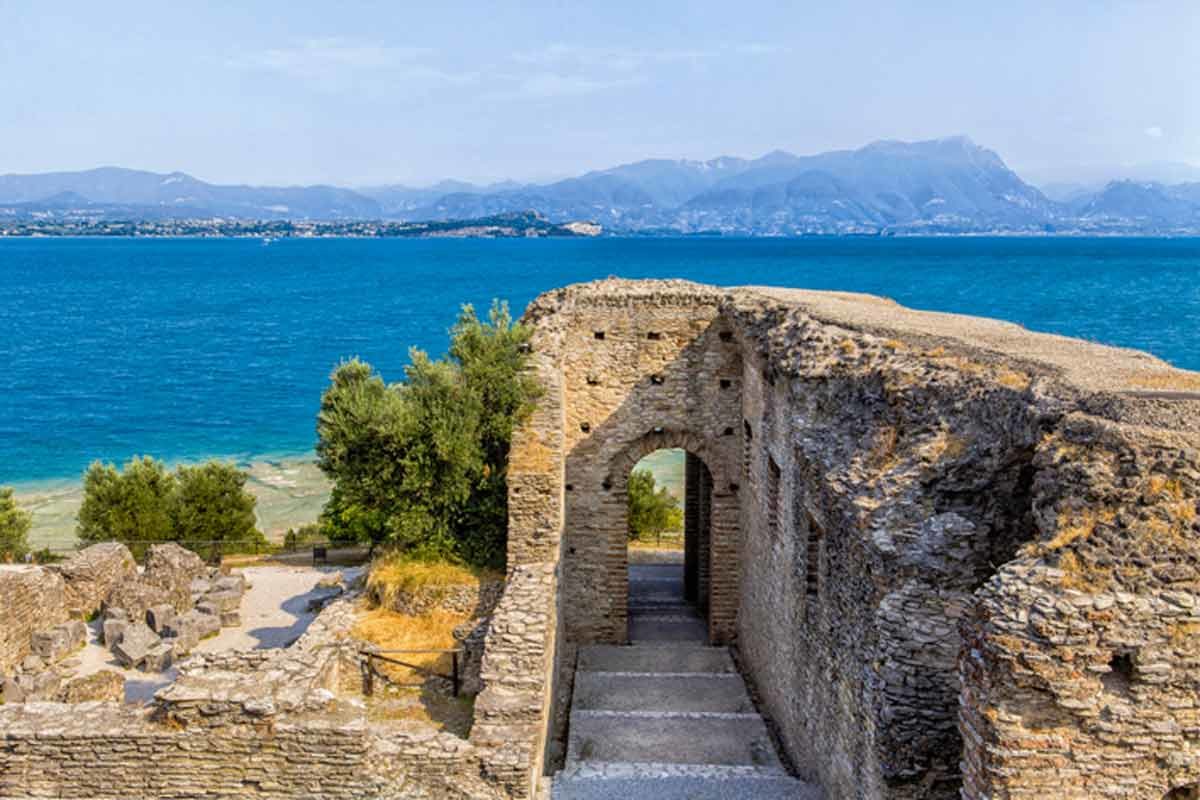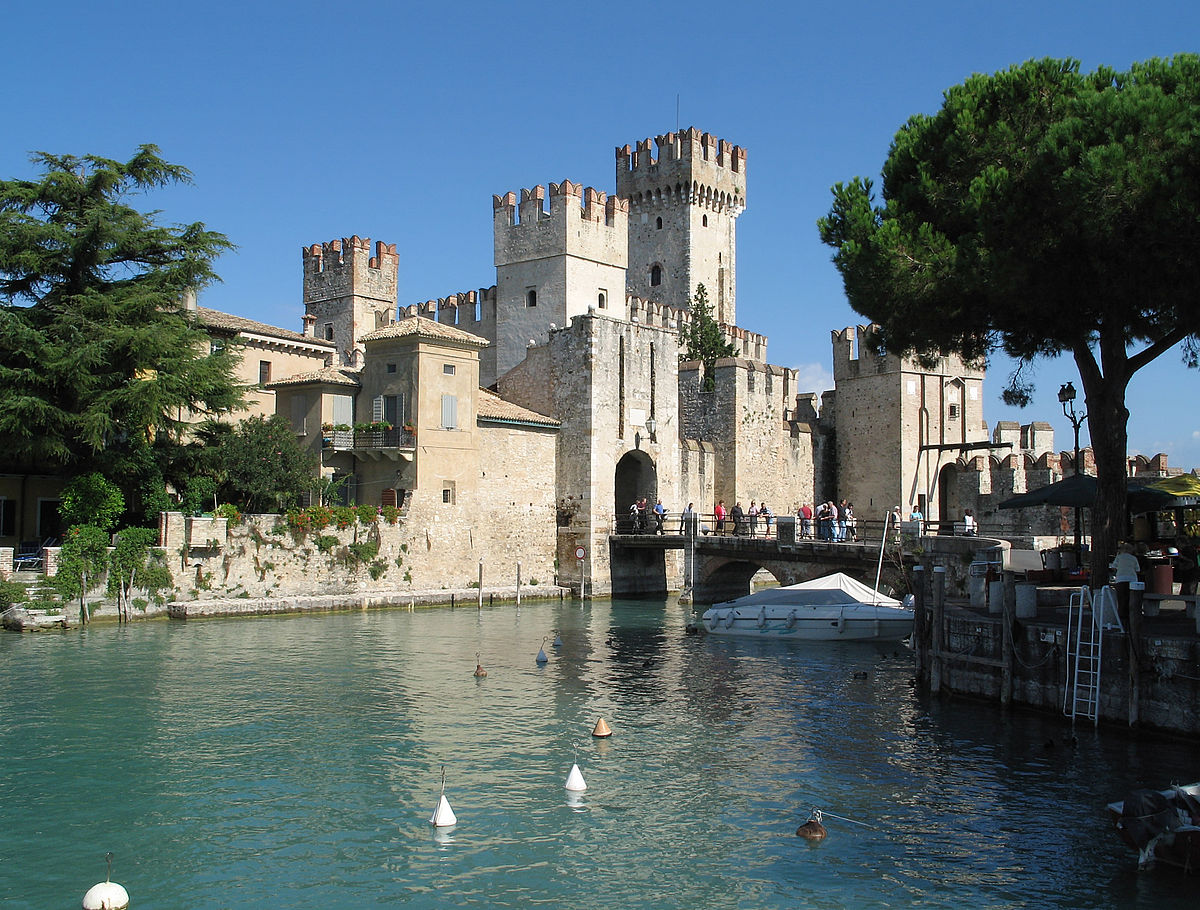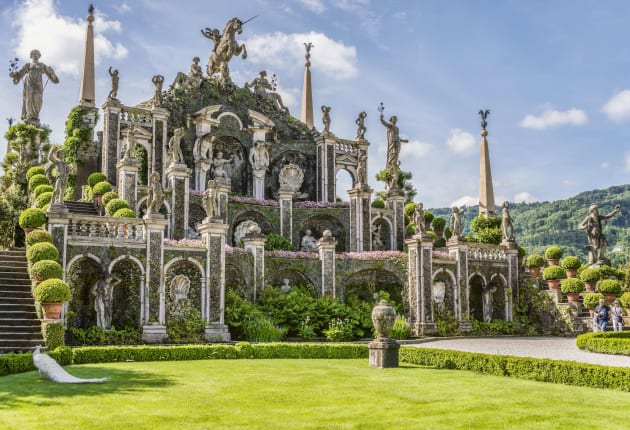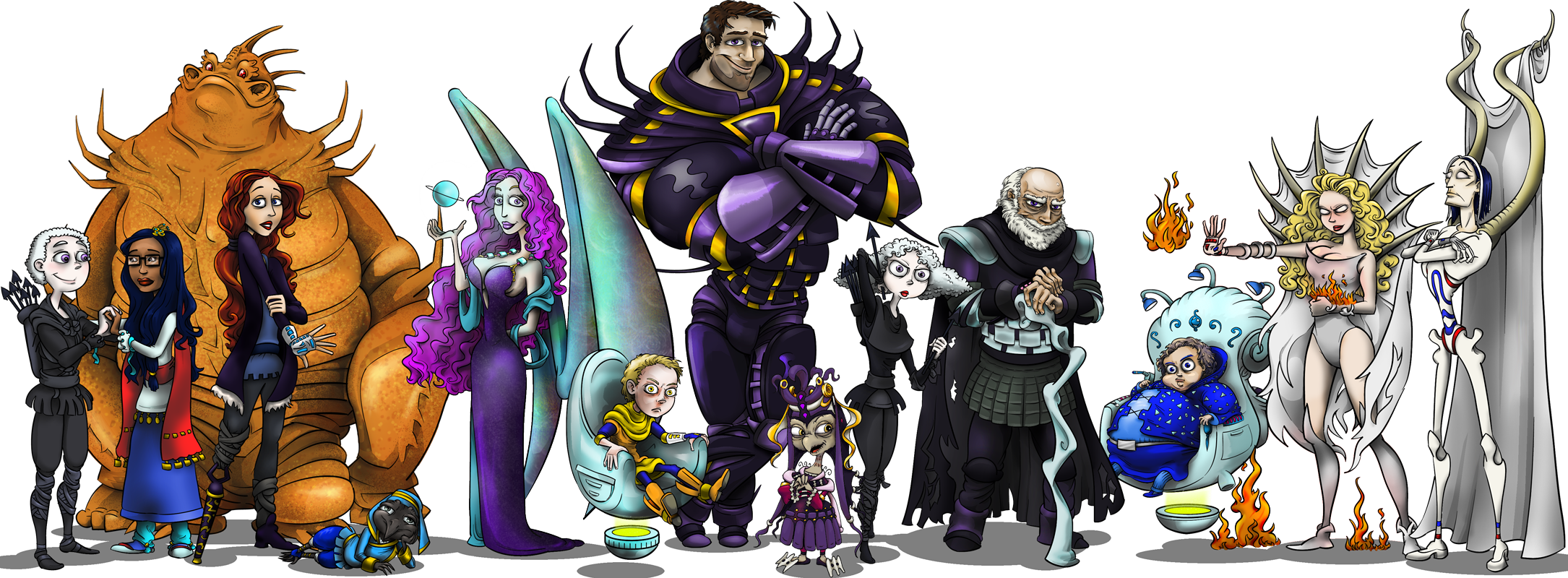It was time to check out and head to Val Calmonica. This was going to be most offbeat part of our trip, in an obscure mountain range, to see neolithic rock art. We packed up our stuff, checked out of the Verona apartment by 10 AM, and proceeded on the two hour drive through Brescia and past Lake Iseo, to Breno.
Lake Iseo, Italy
All of the Alps and alpine lakes of northern Italy are beautiful, but I think Lake Iseo might be one of the most stunning. It’s cradled between green mountains, like a volcanic lake, with a huge mountainous island in the middle. We took a winding highway along cliffs, past the lake, through a series of long tunnels. Some of these tunnels have archways that offer glimpses of a mountain panorama, but you can’t stop, because traffic moves fast and there’s no shoulder on the roadway. My GPS began to look like the cave level of a video-game. There were roads and towns on top of tunnels. A few of these very long tunnels slope downward, so it feels like a roller-coaster into the center of the Earth for fifteen or twenty minutes at a time.

Lake Iseo, Italy
We arrived in the picturesque town of Breno. Hotel Giardino was easy to find, and it looked lovely. However, when we checked in, I couldn’t find my passport. This was a severe problem, since my flight home was in two days!
I emptied my purse and my backpack. I searched the car. It was nowhere to be found. I figured it couldn’t possibly be in my suitcase—why would I put it there? I never put important things in my suitcase, just clothes and gifts—so I figured that checking the tightly packed suitcase would be a waste of time. As far as I could remember, I only ever put my passport in one of two places, and it was simply gone. And my backup credit card was also missing!
Missing U.S.A. Passport in Italy!
It seemed impossible, since I keep a close eye on my stuff while traveling. Neither of my friends were missing anything, and they had left their passports in the Verona apartment during day trips, just like I thought I had.
So I had a mini-panic attack. I couldn’t begin to guess how I had lost the passport and card. We spent the rest of the day trying to figure out how to obtain an emergency passport. Only the hotel lobby had Wi-Fi. I downloaded Google Voice and proceeded to try to get a hold of the nearest U.S. Consulate in Milan, which was closed that day, since it was a weekend. I called the apartment in Verona and asked them to search the room for my passport. They did, and when I called back, they apologized, saying they did not find it.
Then I followed government website instructions and reported the missing passport to Italian police. This needed to be done in person. The report can be made to any police station in Italy, and the local one was an 8 minute walk up a hill. Amy kindly offered to come with me.
I was wary of entering an Italian police station, especially since it had a locked gate and barred windows (albeit a gorgeous view of the Alps). But at least I wasn’t alone, and the desk officer seemed nice, and he expected me, since the hotel manager had called ahead. He filed a report. This took longer than I expected, maybe half an hour, and involved some paperwork. His office was decorated with interesting pictures of police doing good deeds, and also a large wooden Jesus on a cross. Finished, he handed me a paper and said, “This will help you at the Consulate.”

Breno, Italy
Breno looked like a beautiful place to spend a day, and I was sorry to miss touring the area. Apparently there was a Renaissance Faire going on at the local castle—the king and queen came downstairs in our hotel—and I am super curious as to how an Italian Renaissance Faire differs from the silly merchandise-fests we have in North America. But I was too worried about my missing passport to enjoy anything. As far as I could tell, the only way to get an emergency passport would be early on Monday morning at the U.S. Consulate in Milan. I needed to be in Milan by 8 AM the next day.
So we packed up again, and the hotel kindly offered a discount, since we had only stayed a few hours. We drove 2.5 hours to Milan and checked into our final hotel of the trip, one day early.
And guess what? Once we settled into our rooms, I methodically unpacked everything from my suitcase … and there it was. My passport and my credit card were both at the very bottom of my suitcase, buried under a lot of stuff. I think that traveling causes me to be less organized and more forgetful than I normally am. My daily life at home can be such a routine that I never make mistakes like that; I know exactly where my stuff is. I swear, I’ve never lost a credit card or a passport or anything like that in my life! This was embarrassing.
We tried to get a good night’s rest in this large hotel; a snazzy high-rise in the middle of a suburban area. For me, it was difficult, with hard beds and barely functional air conditioning. At least I didn’t need to wake up early to wait in line at the Consulate!
A Day of Exploring Milan, Italy
The next day—our final day of vacation together—we explored Milan, and the weather actually cooled off a little bit. First, we explored the canal, which the desk receptionist recommended as a nice area for shopping and food. This involved a bus ride on the tollway, and then figuring out the underground Metro rail. The bus was more difficult to figure out than the subway. We had trouble finding the pick up area, and we learned—by sheer luck, due to the kindness of an Italian stranger—that the return bus would depart from a different street.
Anyway, after some navigational confusion, we found ourselves in the canal area, populated by outdoor restaurants. Most of the shops were closed, since Italians tend to take off Mondays. We had a delicious meal, listened to thunder, and went back to the Metro before a downpour started.

Canal of Milan, Italy
We emerged at the Duomo of Milan; the enormous, ornate, pink marble Gothic cathedral which is the city’s icon. Of course, there was a line of tourists wrapped around one side of the building, so we decided not to go inside. The outside of the cathedral is impressive enough; more beautiful than Notre Dame in Paris. The spires look like drip castles, each one topped by a statue holding some kind of instrument or weapon. The whole front facade is crazy with statues and reliefs, and the iron doors are all embossed with scenes as well.

Duomo of Milan
We strolled through the grand hall nearby. The Galleria Vittorio Emanuele II has high-end stores, impressive marble floors, wrought iron balconies, and an arched smoky glass ceiling that evokes the 1890s. We passed Armani shops and explored the bookstore, interested to see which popular American authors have been translated into Italian. I was pleased to see books by a couple of hybrid authors (traditionally published, but originally independent authors). Then we had some expensive and fancy gelato, waiting for the storm to pass.

Galleria of Milan
At a break in the rain, we reentered the Metro and emerged at the Sforza Castle. The interior museums were all closed, since it was Monday, but the outer grounds and inner courtyards are open to the public. We passed an outdoor polka concert and proceeded over the drawbridge and into the impressive interior. Hey, I’ve watched “The Borgias” by Showtime, so maybe I know a little bit about the Sforza family!
There seem to be dozens of stray cats and kittens that live on the castle grounds. People were petting them. I wonder how they get into the grassy moat area, and how they get back out. We took a few kitty photos, pondered some ancient sarcophagi and Roman pillars, and then headed back to our hotel.

Sforza Castle in Milan, Italy
Dinner was at an Italian shopping mall next to our hotel. This mall seemed to be mostly devoted to a cinema, a playland for kids, and a floor full of restaurants, with very few stores. The restaurants were arranged like plaza restaurants, with outdoor seating, except it was in the mall hallway instead of in an outdoor plaza. The night before, we had eaten at one of these restaurants, and it blasted loud Italian pop music. So this night, we decided to explore the cinema floor. We discovered an American-themed restaurant called Old Wild West. Cute! It had bench seats designed to look like covered wagons. The menu featured dishes named after Western states (and a few not-so-Western ones, like Mississippi and Kentucky).
That was our goodbye meal. We clinked our wine glasses together, and prepared for our flights the next day. Brian was heading to Vienna, Austria for a week. Amy had a morning flight back to New England. I had an Emirates flight to JFK in New York, with a JetBlue connection back to Austin.
Milan-Malpensa Airport
There isn’t much more to recount. With help from Brian, I found the airport without any trouble, although we both got a little confused about the rental car return. We accidentally entered a long-term parking lot. Fortunately, we figured out how to get out of it, and into the WinRent garage section, on our second try. second try. They sent me a bill for the final half-tank of diesel, and it was a bit more than I would have wanted. Oops.
I went through a long mob of a line at the Emirates counter, and Brian had to wait a long time for his Austrian Air counter to open up. Once we each got our boarding passes and checked our luggage, we had a delicious meal at an airport restaurant called Rosso Pomo Doro. Then we had to say goodbye at the security checkpoint.
The Milan-Malpensa airport is weird (at least, to me). The airport seems small by U.S. standards, but the gates are spread far apart, so it can be a 25 minute hike to your gate even if you speed-walk (the monitors helpfully show walking times). Everything is glitzy and glamorous-looking. I figured I had some time after I went through security, but it turned out there is an extra “passport” checkpoint after the security checkpoint for overseas flights. There were no signs to forewarn people, so families were panicking, cutting through the slow-moving passport line so as not to miss their overseas flights to Dubai or New Dehli or Melbourne. I shuffled through this long line with everyone else, and managed to arrive at my gate with probably twenty minutes to spare.
The Emirates flight from JFK to New York was overbooked and crowded, but the plane had a nice interior design, with plenty of USB and electrical outlets, and recessed lighting. This is the largest Airbus possible, with two floors that run the length of the plane. It requires three separate gate tunnels to board all 500 passengers. And then there was the usual confusion at JFK airport, with rechecking luggage.
I downloaded the U.S. Government’s mobile passport app, but it was useless without an internet connection; I guess the overseas flight jacks up AT&T or something, because I was unable to get connectivity even after restarting my phone and restarting the wi-fi. It works fine now, after a few hours.
Glad I built in an extra day of vacation to account for jet lag!


